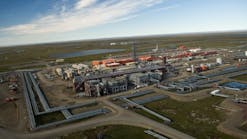EIA seeks comments on proposed expansion of gas, oil production survey
To accommodate the rapid growth and shifting location of US natural gas and crude oil production, the US Energy Information Administration is proposing to expand the geographic coverage of its current monthly natural gas production survey and add collection of state-level data on crude oil and lease condensate production.
EIA has issued a request for public comments on the proposed changes in a Federal Register Notice published on May 6.
“The current survey, the EIA-914 Monthly Natural Gas Production Report, collects natural gas production data from a sample of 240 well operators in five states and the federal offshore Gulf of Mexico that represent, as of December 2013, 66% of total US gross gas production, down from 82% in 2007 when the survey began,” EIA said. “Natural gas production has increased dramatically in some of the states outside the current EIA-914 survey—for example, Pennsylvania and Colorado, both of which now out-produce two of the original EIA-914 areas, New Mexico and the Gulf of Mexico.”
The newly proposed collection of state-level data includes an additional 14 states, raising the sample coverage for natural gas production to 92%.
EIA also is proposing to collect crude oil and lease condensate production data for the same 19 states and the federal offshore Gulf of Mexico. Currently, EIA publishes state-level crude oil production data based on information reported to state oil and gas agencies and has to estimates oil production where state data are not immediately available.
“Long lags in state-level reporting have made it difficult to estimate oil production. Collecting data directly from well operators should provide more timely, consistent, routine, and accurate production data,” EIA said.
In addition, the rapid rise in production from tight formations has revealed the importance of identifying shifts in the qualities of crude oil and lease condensate production.
“Collecting information on the API gravity of crude oil and lease condensate, and possibly the sulfur content, will provide a clearer picture of those shifts,” EIA said.
Comments on the proposed changes are due to EIA by July 7.
